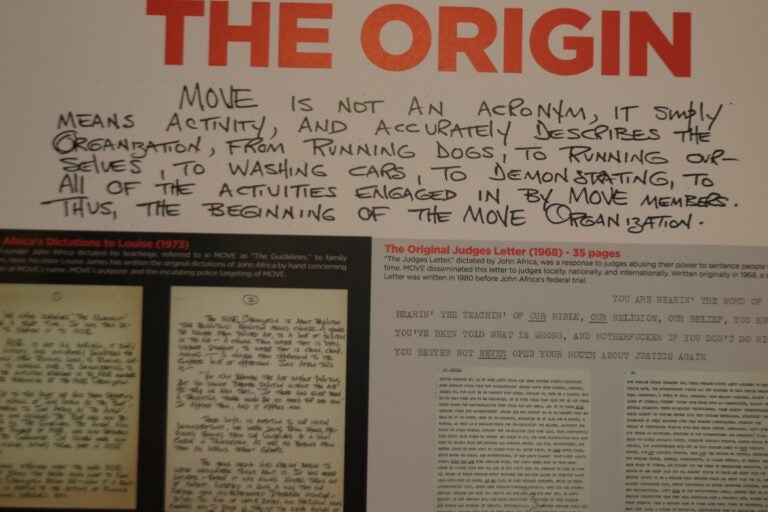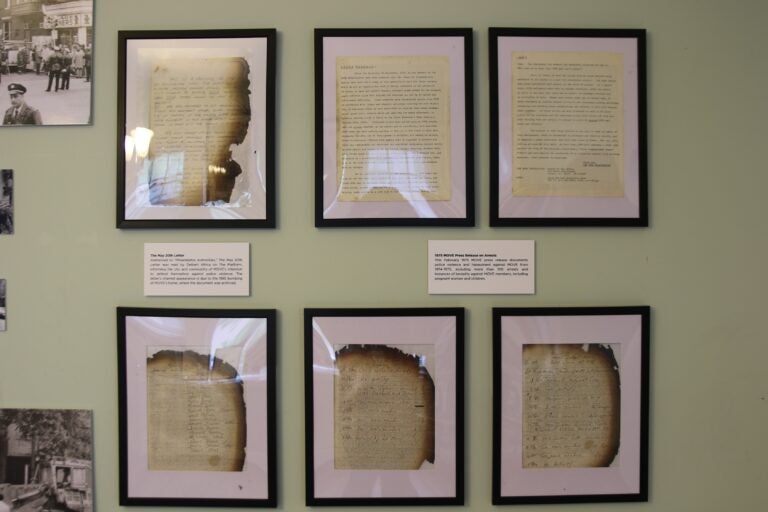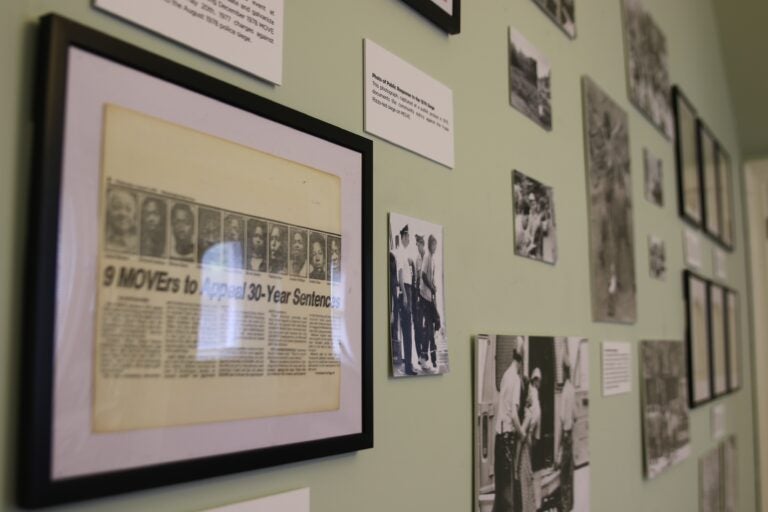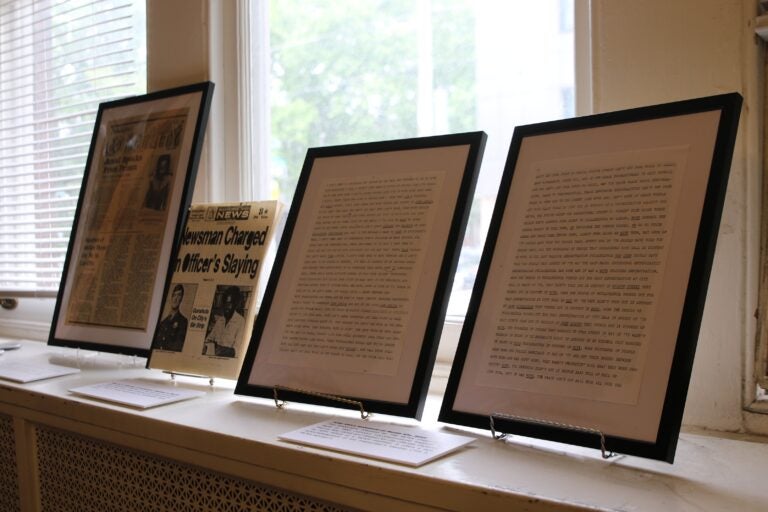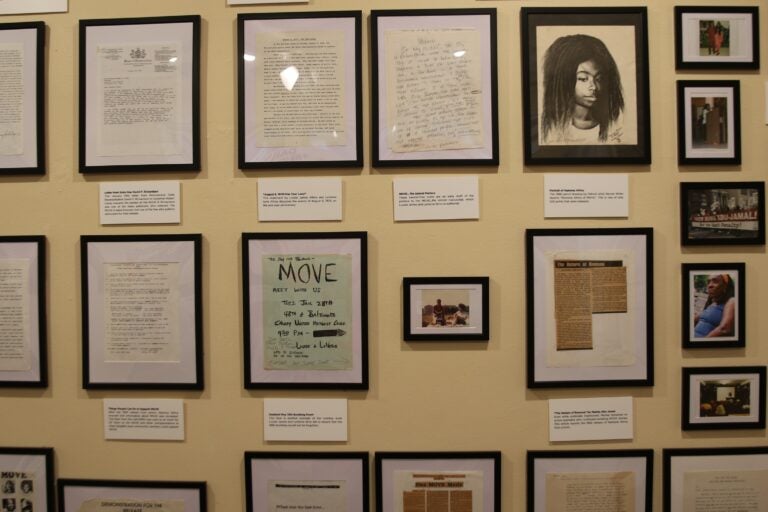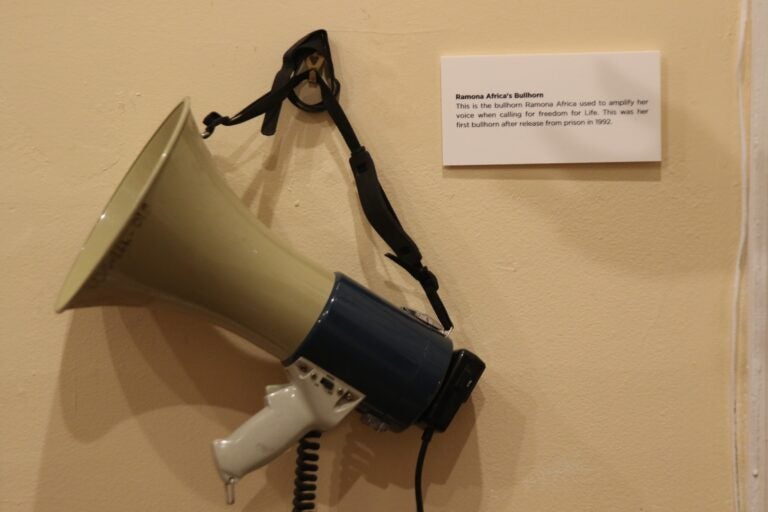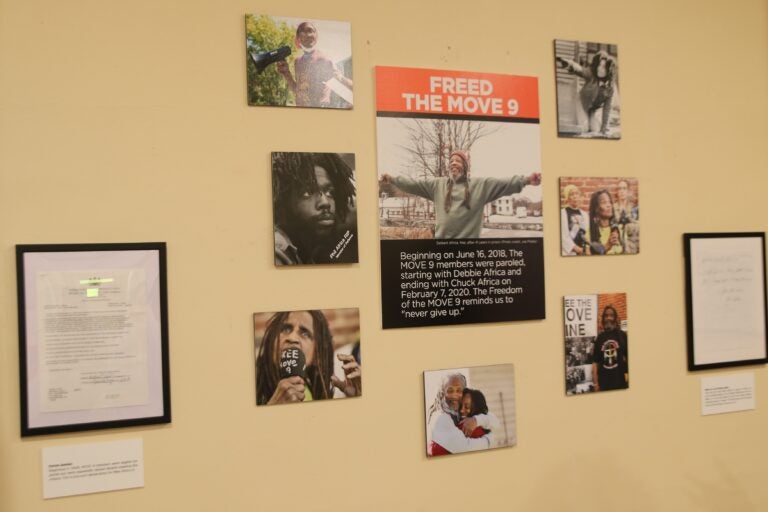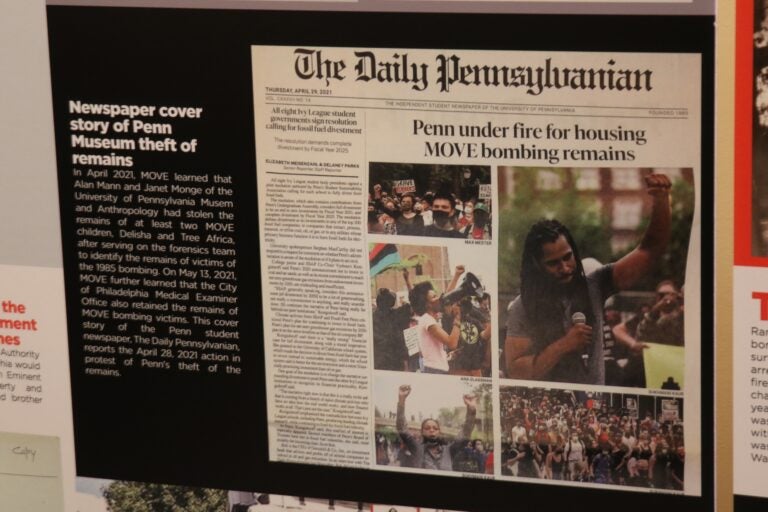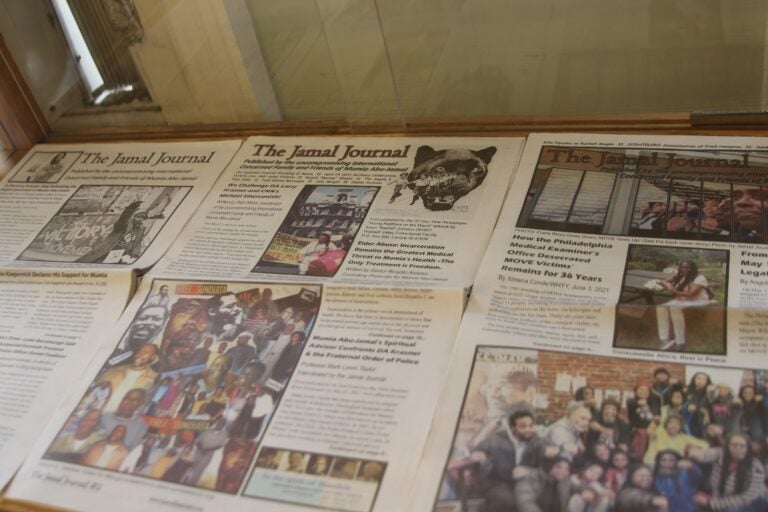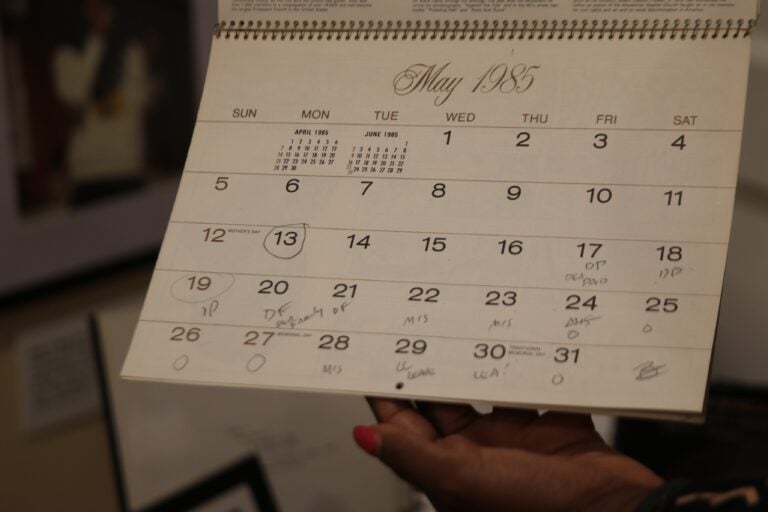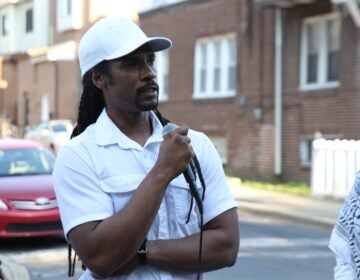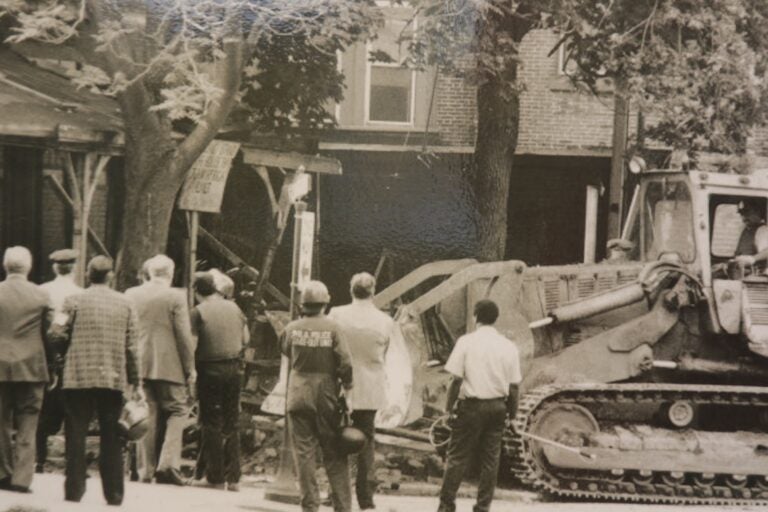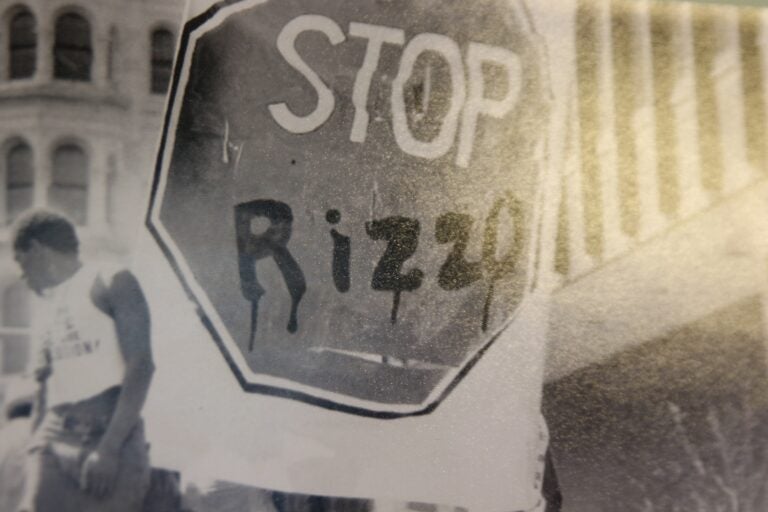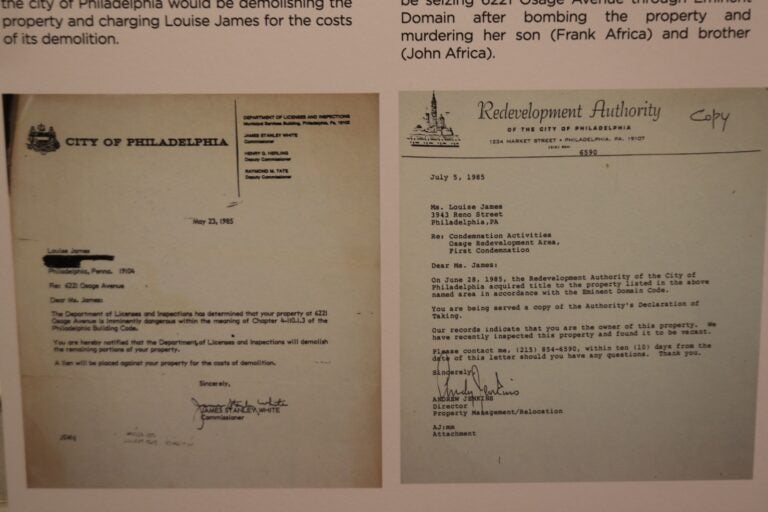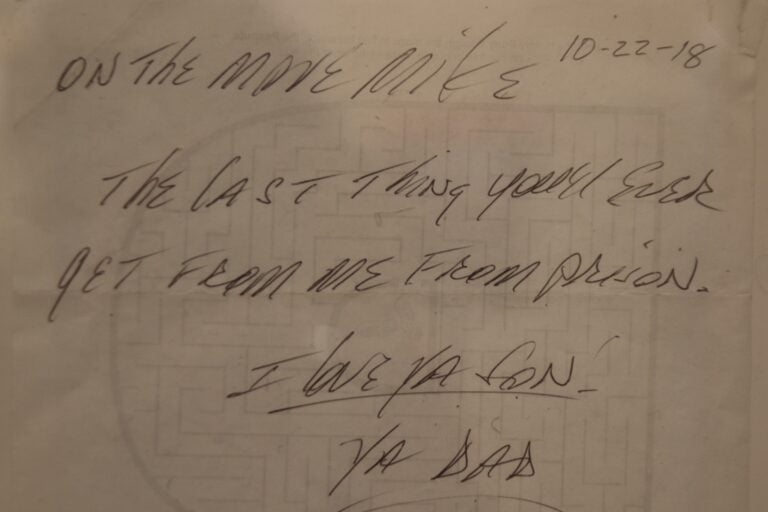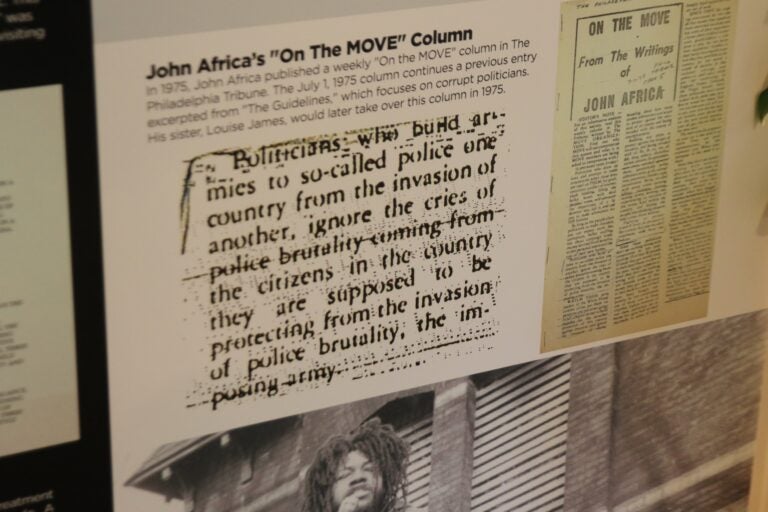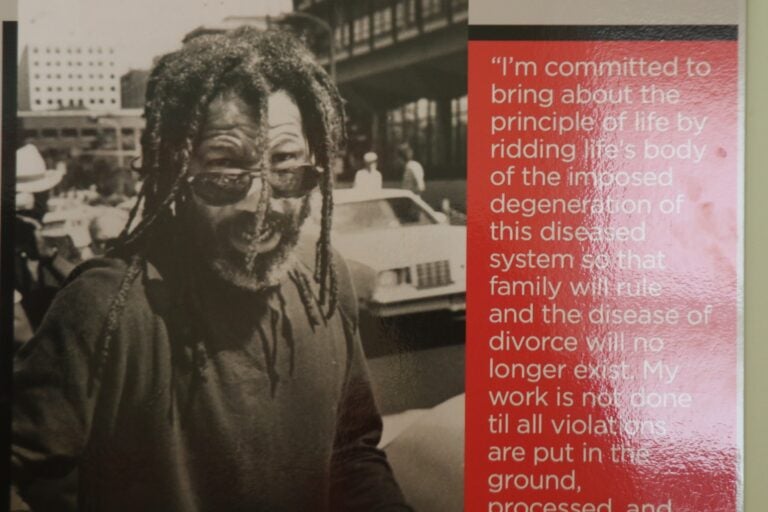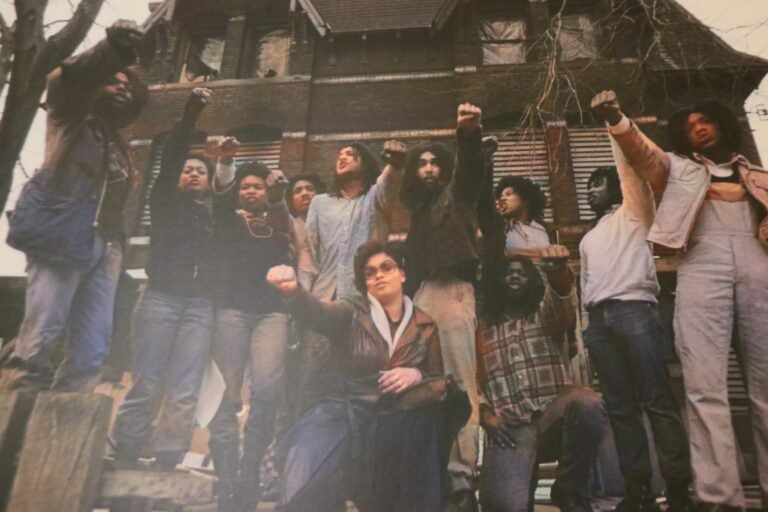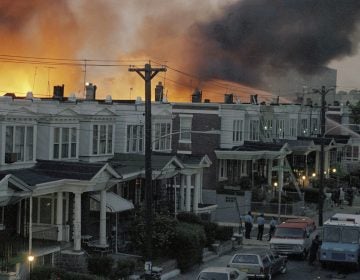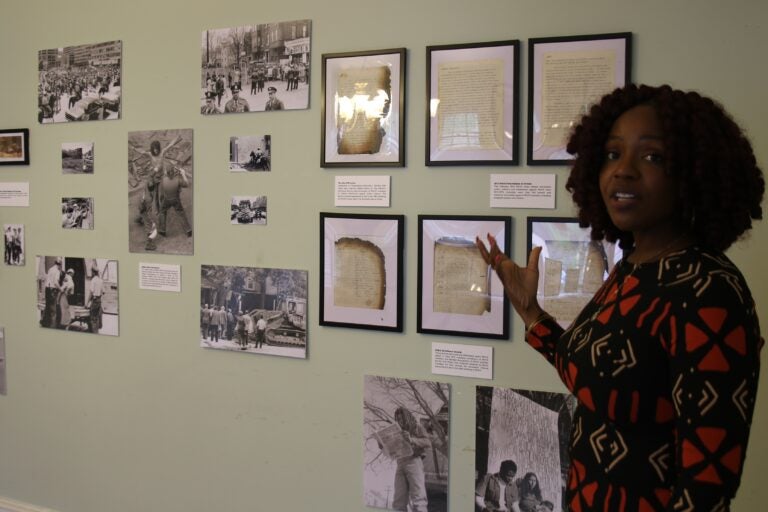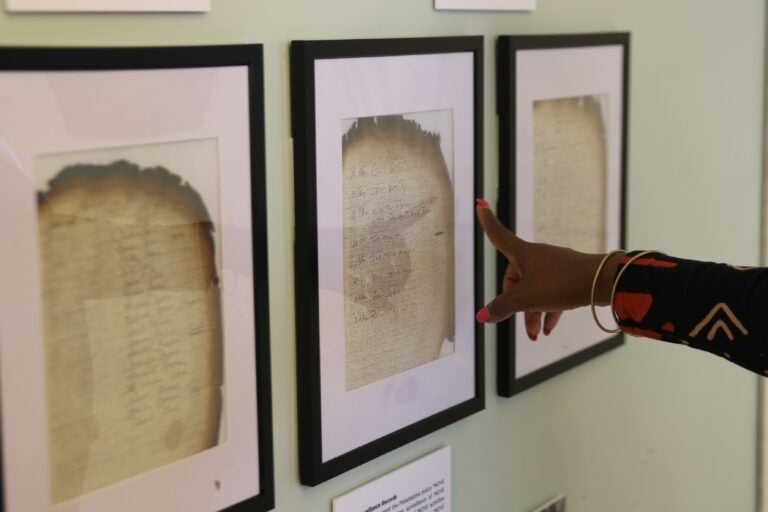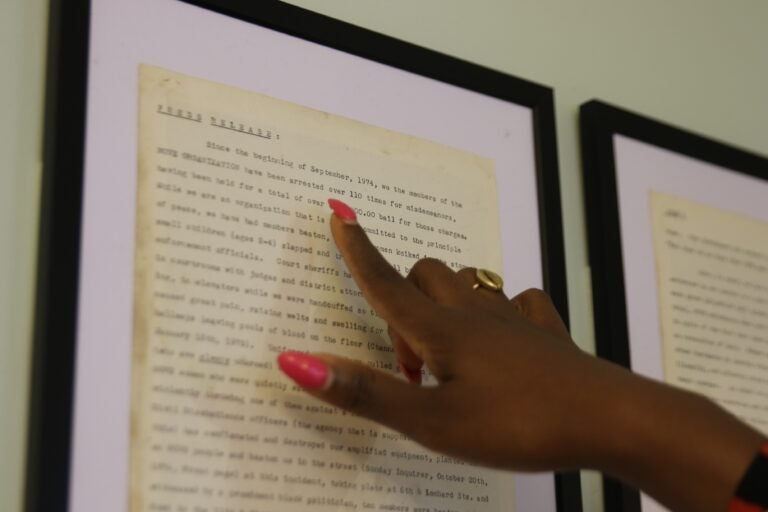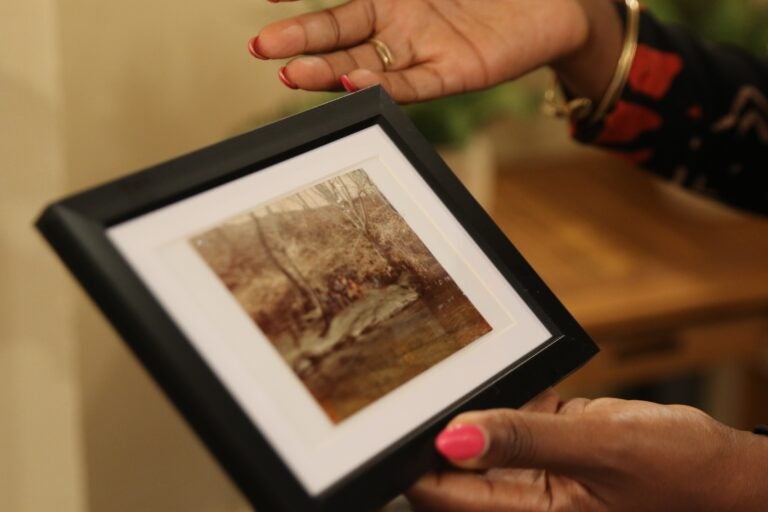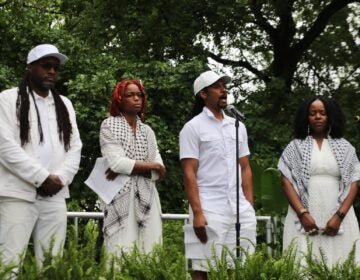MOVE exhibit aims to showcase who the members of the Black liberation group ‘were as people’
“MOVE: The Old Days” tells the history of the organization through an exhibit on display this weekend at the Paul Robeson House and Museum.
Listen 1:07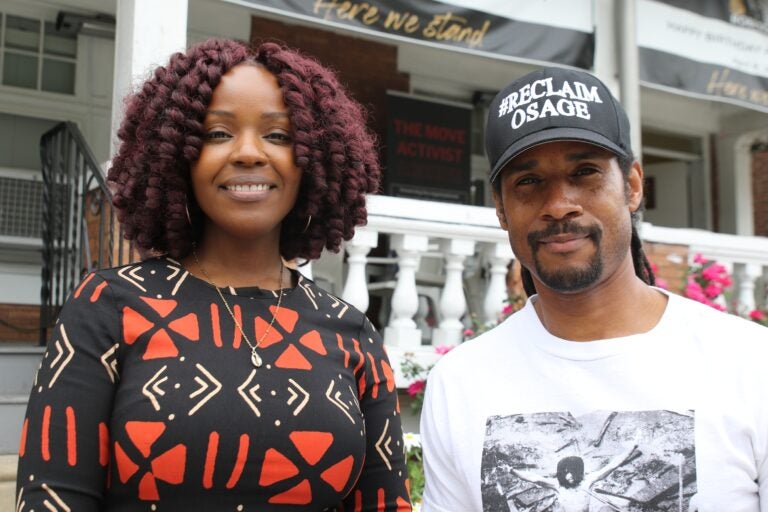
Krystal Strong and Mike Africa Jr. curated the “MOVE: The Old Days” exhibit, which will be on display at the Paul Robeson House and Museum this weekend. (Cory Sharber/WHYY)
After marking 39 years since the MOVE bombing earlier this week, an exhibit at the Paul Robeson House and Museum in West Philadelphia aims to tell the story before and after the deadly event.
“MOVE: The Old Days” tells the history of the MOVE Organization, including being removed from their home in Powelton Village in 1978 and the imprisonment of the MOVE 9.
The exhibit is a first for the MOVE Activist Archive, utilizing roughly 5% of what has been preserved over the years, including letters damaged during the bombing.
On May 13, 1985, Philadelphia police dropped a bomb on the home of the Black liberation group at 6221 Osage Ave. The fire that followed was left to burn by the fire department. Eleven people, including five children, were killed, and 61 homes were destroyed across two blocks of the predominantly Black neighborhood.
Mike Africa Jr., legacy director for the MOVE Organization, said when he was going through boxes of archival material for the exhibit, he was shocked by how much he was learning about the group.
“Even though I’ve been in MOVE all my life and half the organization is my family, the founder of the organization is my great uncle,” Africa said, “you open one photo album and you see people that you’ve never seen before, never heard of before, and there’s a whole conversation that starts because of this person that you’ve never seen before … It’s such an eye-opening experience.”
Africa said the most surprising thing he came across was learning about the level of the group’s police surveillance. He said every movement of the group was noted, and that what some officers said was surprising.
“Things like, ‘These people are living a way that I would like to see my children live,’” Africa said. “There’s one situation where an officer got into a fistfight with a fellow officer because the one officer was disrespecting a MOVE member as she was speaking.”
He said the officer’s personal feelings about MOVE isn’t “necessarily represented the way that it actually was.”
“There were a lot of police officers that enjoyed being around MOVE and listening to MOVE people talk about injustices or just their natural life,” Africa said. “In fact, one officer spent so much time around MOVE [that] when he bought a boat, he named it the Delbert Oar after Delbert Africa. No joke.”
Krystal Strong is a professor of Black studies at Rutgers University–New Brunswick. She helped Africa set up the exhibit and lead tours and hopes those who check out the exhibit get to see who the MOVE members “were as people.”
“This is an opportunity for us to have a fuller conversation,” Strong said. “And we are so thankful that MOVE members have given us all of this material that they lovingly preserved over 50 years … That allows us to grapple with the past in order for us to have a different kind of future.”
Tours of the exhibit will start at 1 p.m. on Saturday and Sunday. Tickets are $13 and proceeds will go towards the Reclaim Osage campaign.

Get daily updates from WHYY News!
WHYY is your source for fact-based, in-depth journalism and information. As a nonprofit organization, we rely on financial support from readers like you. Please give today.



